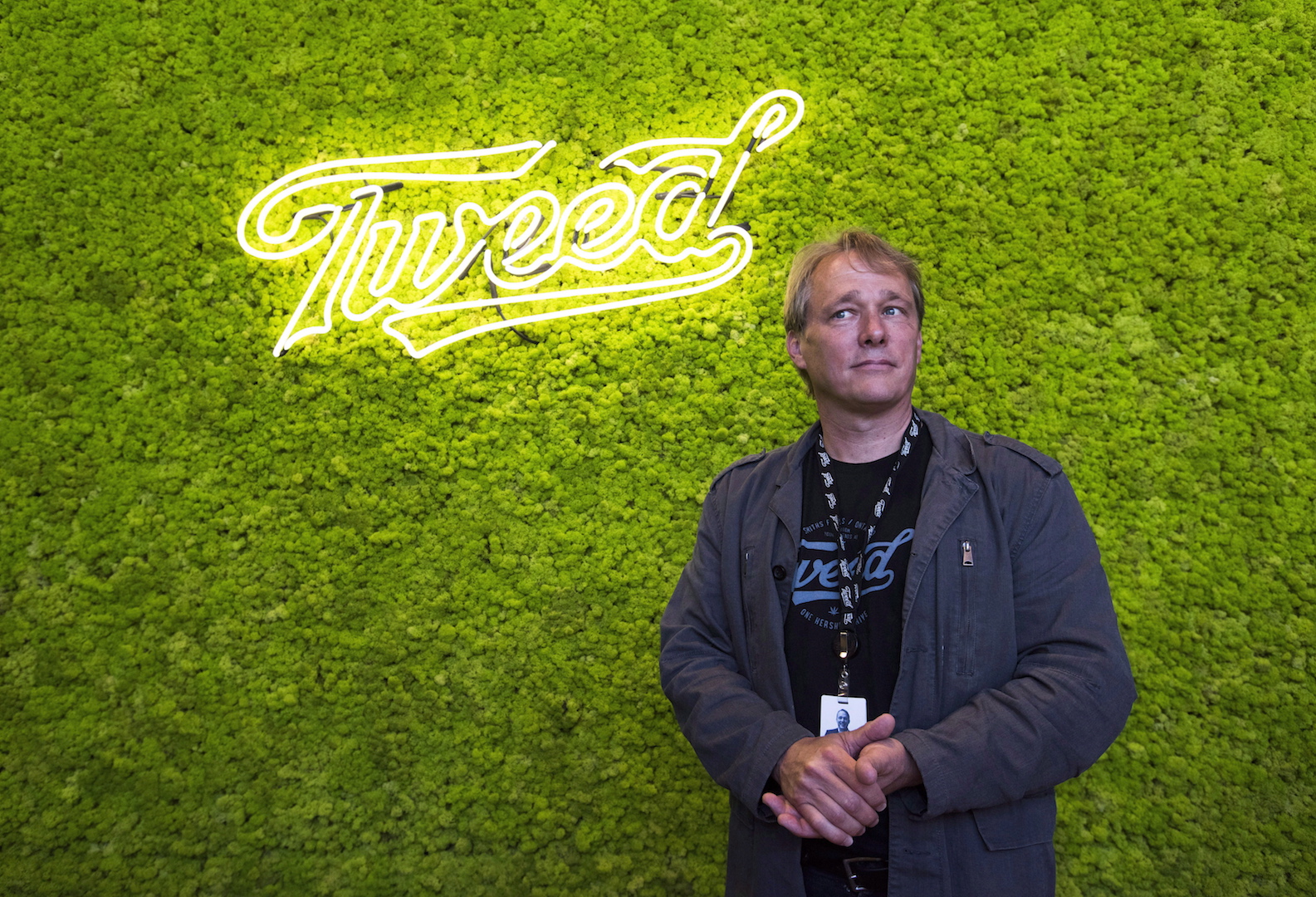Weed CEO Backtracks After Repeating Claim About Fentanyl-Laced Weed On Fox

Credit to Author: Manisha Krishnan| Date: Tue, 04 Jun 2019 18:11:34 +0000
Canopy Growth founder Bruce Linton is walking back comments he made on Fox Business Network in which he stated black market cannabis may be laced with the deadly opioid fentanyl—a claim that has been repeatedly debunked.
Linton, whose company is one of the largest legal weed producers in the world, made the statement while being interviewed about the push towards cannabis regulation in the U.S. by Fox Business host Stuart Varney last week.
When asked if legal weed is much more potent than black market weed sold in the 60s and 70s, Linton said there is a range but that unregulated weed comes with risks, including contamination.
“What happens is if you buy it in the illicit market, sometimes it may be extremely strong and you don’t know what you’re getting. Sometimes the supply chain may cause it to be adulterated with other activations, could be fentanyl, and so these are the sorts of things where if you don’t regulate it, how strong it is, is a big question,” he said. He added that without regulation, “the sketchy players prosper.”
In an interview with VICE Tuesday, Linton said he would have preferred to have limited his remarks to advocating for a regulated supply chain, without raising fentanyl contamination.
There have been no confirmed cases in Canada of weed being laced with fentanyl.
Canopy spokesman Jordan Sinclair said that Linton based his comments on a report from Halton regional police from last month about a suspected overdose in Milton, as well as a report from Waterloo police and the Waterloo Region Integrated Drugs Strategy that warned about carfentanil that had been disguised to look like cannabis. The Leaf News later detailed how the Waterloo story was misleading—the photo of the green substance that is supposedly carfentanil disguised as weed is actually from Ohio police. A local opioid consumer told the Leaf a similar-looking substance being sold in the area looks like pressed rock and that “nobody is marketing it as cannabis.”
The Milton report said that two 18-year-old boys were hospitalized after being found unconscious outside a home, with “obvious signs of a suspected overdose.”
The release said the boys were suspected to have overdosed from an unknown drug. Police later told the Globe and Mail that they were investigating whether or not the weed found in a bong at the scene was tainted with opioids, and that they believed the boys had overdosed on opioid-laced cannabis.
However, when reached by VICE on Monday, Halton police appeared to have walked back those remarks.
“We’re not making any assumptions at this point,” said Halton police spokesman Steve Elms, noting that test results on the drug sample found at the scene haven’t come back yet.
He said the comments made to the Globe were “based on the circumstances that Narcan was administered and it seemed to have an immediate reaction, they could have somebody that had an opioid in their system. But how that opioid actually got into their system we don’t know. Whether it was ingested previously in the evening or it was part of that marijuana we don’t want to make any assumptions on that.”
Linton told VICE he had assumed the media coverage around the police reports was accurate.
“If it’s incorrect, I’m not trying to fear monger but I am trying to get people to contemplate, do you understand the source of origin of the supply chain for anything that you’re consuming and if you don’t, why are you?” he said.
He said that his comments have created “volatility.”
“That topic will not come out in the public again unless there’s evidence that says it should and now it appears there isn’t,” Linton added.
The claim that cannabis is sometimes laced with fentanyl has been previously debunked, but the myth has persisted as fentanyl continues to permeate the illicit opiate supply chain. A VICE investigation into claims about fentanyl contamination in other drugs, including weed, found that some of these warnings are issued when a person who overdosed had multiple drugs in their system, with authorities assuming that one substance was laced, without knowing for sure. This assumption has already shaped drug and public health policy in response to the opioid crisis.
David Juurlink, head of clinical pharmacology and toxicology at Sunnybrook Health Sciences Centre in Toronto, said he’s not aware of a single documented case in which cannabis was found to be contaminated with fentanyl.
Government data obtained by CBC News in 2017 found that in all of the drug samples collected by police forces, Canada Border Services Agency, and the Correctional Service of Canada between 2012 and September 2017, zero samples of cannabis were found to have been laced with fentanyl.
Juurlink said he doesn’t understand why anyone would lace cannabis with fentanyl, as “the disincentives (financial and otherwise) seem pretty obvious.”
“Claims like this just add to the every-present fentanyl hysteria, confusing an already-complex issue and promoting scaremongering that doesn’t serve to make anything better,” Juurlink said.
In 2015, Vancouver police issued a press release said “fentanyl-laced marijuana, heroin, oxycodone and other party drugs, have resulted in the deaths of many occasional drug users.” The force later issued a correction stating that it has never come across fentanyl-laced weed.
Nonetheless, that claim was repeated by former B.C. premier Christy Clark and Trump advisor KellyAnne Conway.
Linton said his comment about “sketchy players” prospering without regulation was a reference to illicit market cannabis sellers who have no quality control and may sell to minors. He added his core point is that a legal, regulated marketplace offers the best quality control and safety for consumers.